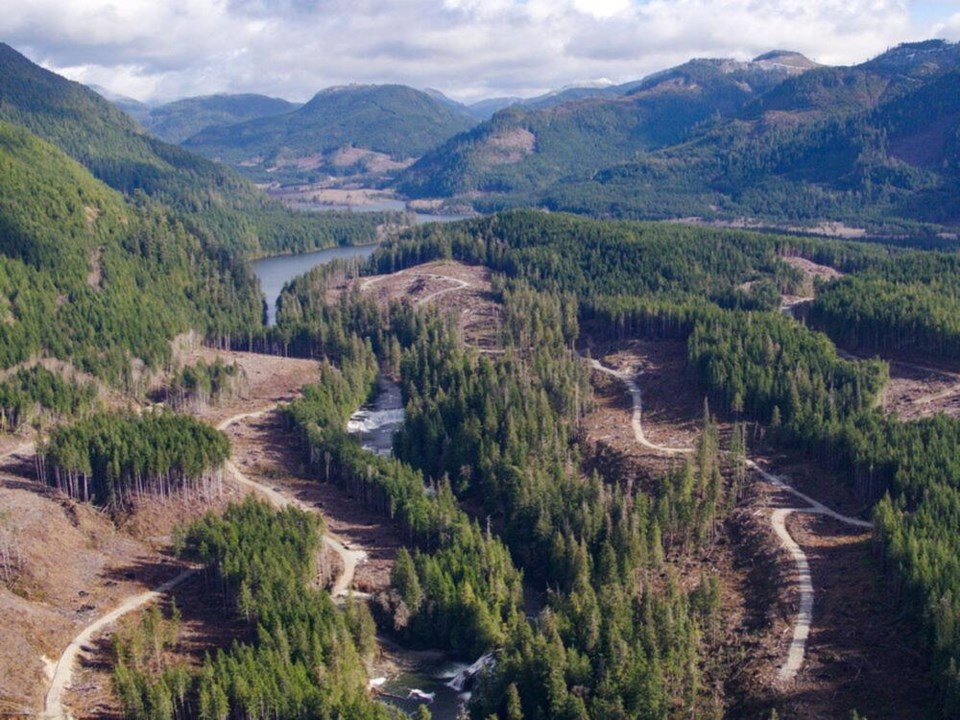Reconciliation for the Huu-ay-aht Nation on the West Coast of Vancouver Island, in part, looks like a forestry partnership with industry designed in its own image.
The Huu-ay-aht, through its Huumiis Ventures Limited Partnership, and Western Forest Products have relaunched their joint venture to manage Tree Farm Licence 44 under the name Tsawak-qin LP with a promise to improve on stewardship of 1,400 square kilometres of land.
Friday’s relaunch represents a next step in the partnership formed by Huumiis and WFP in 2019. Huumiis finalized the purchase of a 35 per cent stake in TFL 44 in May this year, with the option to buy another 16 per cent in 2023.
“This is something that is key in regards to achieving true reconciliation, especially in terms of economic reconciliation and in terms of the amount of influence we have on our own lands and resources,” said Huu-ay-aht Councillor John Jack.
The partnership gives the Huu-ay-aht a financial stake in the timber operations that feed operations in Port Alberni and surrounding area more control over them.
Partnerships between Indigenous Nations and industry have become commonplace in B.C.
This agreement is a great example of First Nations taking on “full partnership” in the forest sector, according to Charlene Higgins, CEO of the B.C. First Nations Forestry Council. And the name change is “a step in recognizing the first people that were there.”
The Huu-ay-aht’s agreement with Western gives the Nation a chance to devise its own resource-management plan for TFL 44 that respect their traditional cultural values.
“It’s not a sea-change,” Jack said, acknowledging that forest practices have a evolved and improved, but it will give the Huu-ay-aht a chance to make sure measures are in place to identify and protect things that are culturally important when logging cut blocks are laid out.
Tsawak-qin is an anglicized spelling of the Nuu-chah-nulth language term C̕awak ʔqin, which translates to mean ‘we are one.’ And the name change, Jack said, caps “the significant amount of work that has already been done between our Nation, our economic-development wing, and Western Forest Products.”
A new stewardship-monitoring program, under the name Witwak Guardians which starts in January is part of the renaming, which will set “a new approach to protection, monitoring and enhancement” of forestry operations, according to their joint news release.
“The addition of the Witwak Guardian program will continue to ensure all of those living, working and visiting TFL will continue to adhere to these sacred principles when working or visiting our ḥahahuułi (lands),” said Tayii Ḥaw̓ił ƛiišin in the news release. That’s the traditional name for Derek Peters, the Huu-ay-aht head hereditary chief.
For Western, the name change is “just a great representation of the journey that we’ve been on,” said Shannon Janzen, the company’s vice-president for partnerships and chief forester.
The partnership, which creates a separate business with First Nations ownership, is a first for Western Forest Products, Janzen said, but shows “how reconciliation can work.”
“It’s also a great way in which to demonstrate how traditional values and modern forestry practices can work together to create a positive result,” she added.
Tree-farm licences are Crown forest tenures, which grant harvesting rights — and management obligations — to those who hold them on 25-year terms.
TFL 44 has an annual allowable harvest of 780,000 cubic metres of timber, Janzen said, which flows to Western’s six mills on Vancouver Island, including its Alberni Pacific division where the Huu-ay-aht also hold an interest.
“You won’t see much of a difference in the amount of timber that’s harvested in the first little while,” Jack said. “But what we really want to see, and this is what we’re bringing to the table, is an understanding and a focus on what specific forestry practices we can back.”
twitter.com/derrickpenner



